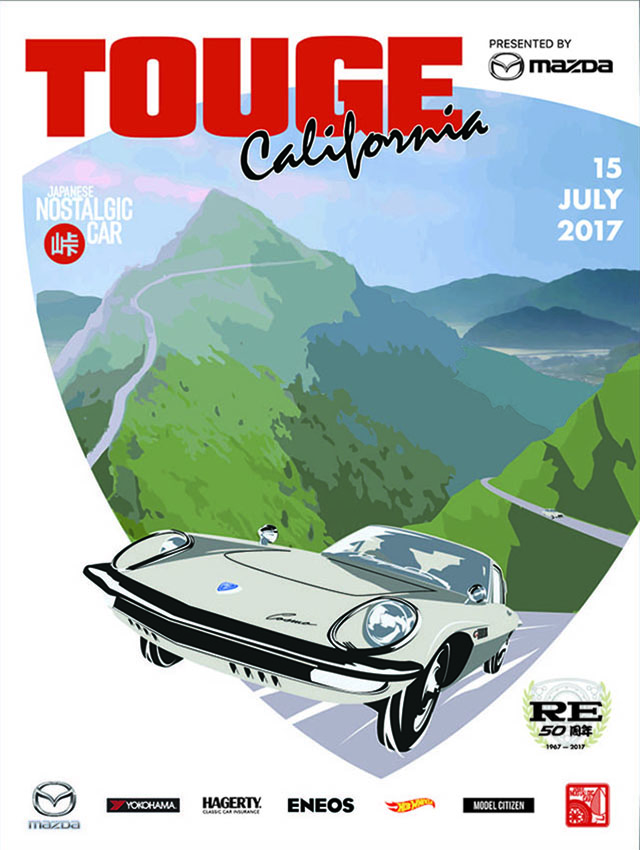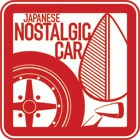One of the biggest topics at the Japan Mobility Show is the shocking Toyota Century Coupe. The massive fastback upends over half a century (no pun intended) of tradition, in which Toyota’s flagship sedan was just that — a sedan. But the Century wasn’t just any four-door. It was dignified, elegant, understated, and packed with nods to Japanese culture. At least the Century Coupe is one of those things.
To understand the Century one must begin with the original, introduced in 1967 at a time when Japan was at a very different stage in industrialization. Toyota, Nissan, and Mazda were not yet household names. Toyota was known in the world’s largest automobile market, the US, primarily for a failed Crown and the up-and-coming Corona.
Enter Kenya Nakamura, the first man to wear the title of Chief Engineer not just at Toyota, but in the entire Japanese automobile industry. Nakamura led the development of multiple generations of Crown, the first-gen Corona, and the Crown Eight, the Century’s predecessor.
At the start of the Century’s development in 1963, Nakamura laid out the car’s guiding principle: “To be like no other.” There were detractors, both in and outside Toyota, who questioned how a brand with no heritage or prestige could hope to sell a car aimed at the highest levels of the luxury market.
“Tradition will naturally follow,” Nakamura replied. “Let’s create a new kind of luxury car unlike anything before.” Naysayers called the project reckless. Luxury cars were steeped in convention and had to conform to old sensibilities. Nakamura called the lack of innovation an “Achilles’ heel.” He put forth a plan to create a luxury car that mixed Toyota’s best technology with Japan’s unique artistry and skill.
They called it the Century, representing 100 years since the 1867 start of the Meiji Era, which ended feudalism and catapulted Japan into an age of modernization and industrialization. It also happened to be the year of Sakichi Toyoda, who would go on to found the Toyoda Automatic Loom Works, the company from which Toyota Motor Corp. became a more successful offshoot.
At the JMS press briefing Akio Toyoda seemed to equate the current state of Japan’s auto industry with the era leading up to the original Century. Japan’s economy has been stagnant since the bursting of the Asset Price Bubble.
“Japan as a nation seems to have lost some of its energy and dynamism, along with our presence in the world,” he said. At the same time, Toyoda recognized that Japanese culture is more popular than ever and recognized across the globe, from anime to cuisine, video games to sports.
“I believe now more than ever, we need the Century,” Toyoda concluded. The Century is now its own brand, above Lexus and aligned with the hyper-luxury elite like Maybach and Rolls-Royce. but infused with Japanese culture. Here are some of the touches that will set the Century apart as Toyota takes the brand to new heights.
To start off, the Flare Orange paint looks amazingly deep and rich. That’s because it’s comprised of 60-plus layers, and just like Toyota Century sedan, applied by Toyota’s master painters and hand-polished to mirror perfection.
The grille represents the Japanese craft of kumiko latticework dates back to the seventh century AD, and was used in the shoji screens of Japanese homes. The intricate geometries are assembled without glue or nails, using precision-cut grooves and the pressure of interlocking pieces to hold together. The shippo pattern of interlocking circles are a Buddhist symbol for harmony and prosperity, often found on textiles and woodworking, dating back to the eighth century.
Centurys are not meant to be driven but driven in, and the Coupe’s interior consists of two seats, a chauffeur’s bucket and a larger passenger recliner offset to the left rear. To divide the cabin a light shade comprised of thin lines separates the driver’s perch from the passenger’s legs. These threads are a reference to the looms on which the Toyota empire was founded.
Bits of trim use Wajima lacquering from Ishikawa Prefecture, a technique nearly 7000 years old. The process coats wood with a mixture of sap from urushi trees, water-repellent when hardened, and diatomaceous earth powder. The result is extremely durable and known for its lustrous finish.
The seatback of exposed wood was made in partnership with Tendo Mokko, a Yamagata woodworking firm known its chess pieces and furniture. Mid-century stools made by the firm have gained worldwide renown and are part of the Museum of Modern Art‘s permanent collection.
Fabrics on the rear compartment next to the passenger seat are woven nishijin-ori fabric, a silk brocade from the Nishijin district of Kyoto. The heavy, wrinkle-resistant fabric is often used in fabrics for obi, or kimono sashes, and dates back to the eighth century.
The cabin even includes a tokonoma, an alcove for displaying art or flowers in some Japanese homes and temples. In the case of the Century, it’s used to hold a bottle of high-priced alcohol. Separately, a machined metal coat hanger helps ensure that the employer’s jacket doesn’t get wrinkled.
Every ultra-luxury car needs its own umbrella, and the Century Coupe doesn’t skimp. The included rain deflectors are made by Maehara Kouei Shouten, the venerable umbrellery that supplies Japan’s royal family. The firm has been making umbrellas for three generations and one example can cost as much as $400. The Century also comes with a shoehorn, and as expected it’s not just any shoehorn but one made of lightweight magnesium.
Last but not least is the horsehide key case crafted by Warmthcrafts Manufacture. The leathersmith is among Japan’s finest, and a small card holder from the shop can cost as much as $300.
Tying it all together is the Century nameplate, once a fun trivia fact outside of Japan but now understood by most car enthusiasts as Japan’s premier luxury car. Will global awareness of the Century be enough to command the prices and, more importantly, the status of a bespoke Rolls-Royce? As Toyota chairman Akio Toyoda said at the press briefing of the new Century Coupe, “I believe this car was born carrying Japan on its shoulders.”
Some images courtesy of Toyota.



































I know that Japan in general, and Toyota in particular can make a car of this type that can match or better any luxury manufacturer on the planet, the issue will be selling it to an entrenched elite that are slavishly brand and status conscious. Getting them to eschew Rolls/Bentley, or Mercedes/Maybach will be a tall order indeed.
I agree.
it will have trouble gaining traction in western markets. Just look at otherwise fantastic cars like the first gen NSX, and current LC500. Buyers at that price point automatically go for old world Euro brands
there are still lots of wealthy customers in Japan ..They can try to aim at wealthy mainland Chinese, who are knowledgeable about Japanese craftsmanship.
but the CCP routinely whips Japan when it needs to Stoke domestic anger , so being caught in an uber-Jaoan car in China may be risky
Needs bigger wheels for the LV crowd to accept it.
I regret to say, that as a long time Toyota enthusiast I find the new Toyota Century Coupe butt ugly. Although I do give props to Toyota for some of the attempts at traditional craftsmanship and Japanese heritage.
Anyhoo…. Long live the original.
Hear, hear! I think they missed the mark. The previous models just look gangster. I wish they would have gone for a more classic silhouette, but with the sliding doors from this prototype.
This Century Coupe looks generic Chinese EV = utterly forgettable. Nothing about the “design” is unique or connected to the history of the Century. Being a modern company, Toyota will rush ahead on this and wonder why it failed.